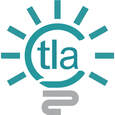|
Small group activities... online?
Institutions of higher education around the world are providing their faculty with resources for online instruction that is active and engaging - read on for ideas, tips, tricks, and recommended practices.
Now that you have the power of Webex Breakout Sessions - what are you going to do with it? The CTL at Boston University has recommendations for adapting your face-to-face activities to either the synchronous OR asynchronous environment.
FROM BOSTON UNIVERSITY CTL A Quick Guide to Converting your Face-to-Face Pedagogical Approaches to the Online Environment Many of the strategies used for student engagement in face-to-face classes can be modified for use in the online environment, whether synchronous or asynchronous… Some common classroom techniques are outlined below, with suggestions for their modification for online environments. Video - “Translating In-Person Teaching Strategies Online”
Here is a sample of some of the activities in this BU article - check this week's blog post for the full chart, as well as resources from other universities.
I hope you enjoy these ideas from Boston University! For more useful teaching & learning resources, keep an eye on the CTLA blog.
OTHER RESOURCES:
UNIVERSITY OF MASSACHUSETTS
ST. GEORGE'S UNIVERSITY OF LONDON
BOSTON COLLEGE CTE
RUTGERS UNIVERSITY | P3 COLLABORATORY
STANFORD TEACHING COMMONS
DON'T FORGET - if you have other questions about Teaching, Learning, and/or Assessment, contact the CTLA!
To submit a request for assistance: https://ctla.cgc.edu/help.html HAPPY TUESDAY, EVERYONE! Mary
REMINDER... this week's LOL (Live Online... Live!) session is this afternoon from 2:30-3:30.
No registration necessary - just use the bit.ly link below to join the Webex meeting:
You've been wishing for months that Webex wold allow you to break students into small groups - well, the Webex Breakout Sessions feature is now available!
Webex link: http://bit.ly/LiveOnlineLive The Webex room will open 15 minutes prior to start time.
0 Comments
Your comment will be posted after it is approved.
Leave a Reply. |
Categories
All
Author
Awesome people who want to help you do awesome stuff in the classroom! Join the conversation here or in our Facebook Group: CGCC Center for Teaching, Learning, and Assessment Archives
October 2023
|
TOPICS |
SUPPORT HoursMonday - Thursday
8am - 4pm Friday - Out for Summer |
|
© Chandler-Gilbert Community College, 2024.




 RSS Feed
RSS Feed
